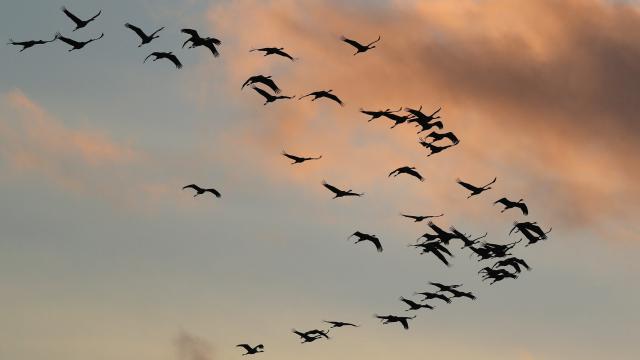Since this year hasn’t been spooky enough, thousands of migratory birds are now dropping dead across the Southwest.
In late August, biologists got word about dozens of birds falling from the sky at the White Sands Missile Range and White Sands National Monument, both in southern New Mexico. Since then, people throughout Colorado, Texas, Arizona, and as far north as Nebraska have discovered the dead creatures scattered along hiking paths, golf courses, and even their own driveways. Finches, flycatchers, swallows, warblers, and bluebirds are among the species that have been reported. It’s not uncommon for some birds to die during their autumn migration, but not in these numbers and certainly not plummeting out of the sky in droves.
[referenced id=”1218516″ url=”https://gizmodo.com.au/2020/05/migratory-birds-are-failing-to-adapt-to-climate-change/” thumb=”https://gizmodo.com.au/wp-content/uploads/2020/05/27/obsmb3oqgw8omlu1ryju-300×168.jpg” title=”Migratory Birds Are Failing to Adapt to Climate Change” excerpt=”New research published in the Proceedings of the U.S. National Academy of Sciences on Tuesday shows that the climate crisis may be seriously messing with North American birds’ migration patterns, and the consequences could be dire.”]
“This is definitely not an annual phenomenon,” Tristanna Bickford, a spokesperson for the New Mexico Department of Game and Fish, said. “It’s not something we would normally see.”
In addition to the dead birds, Bickford said her agency has gotten reports of birds that appear strangely lethargic. Some animals have been seen exhibiting unusual behaviour like not eating, sleepily drifting low to the ground, and searching the ground for bugs to eat rather than sticking to their usual trees and shrubs. Many birds observed have been unusually scrawny.
Scientists aren’t yet sure what’s causing this mass bird death, but researchers at Cornell University’s ornithology lab suspect it has to do with the smoke from the historic wildfires burning in the western U.S., which has drifted across the country on easterly breezes. They cite a 2017 study, which shows that exposure to smoke can lead to immunosuppression, respiratory distress, and other severe health problems for avian populations.
Another possibility is that the birds may be having trouble adapting to the unusually dry heat that the Southwest has seen of late amid the worsening climate crisis. These conditions can be unfavourable to the insect populations that migratory birds rely on for food, which studies show has caused bird populations to decrease.
“This year, August 2020 was the hottest on record in many areas of the West,” Andrew Farnsworth, senior research associate at Cornell’s Ornithology Lab, wrote in an email. “Most certainly the smoke may be a proximate cause, but heat and dry contribute!”
Biologists around the country are still working on further research of the bird bodies. On Wednesday afternoon, scientists at New Mexico Department of Game and Fish will ship off carcasses for study at the National Wildlife Health Centre.
“Until we get those reports back, we don’t know anything for sure,” she said.
But Farnsworth feels confident that though the exact cause hasn’t yet been identified, in broad terms, the climate crisis is likely a culprit.
“These things are at once shocking but at once expected — the new norm in climate change is that we must expect the unexpected,” he said. “While this is shocking, the magnitude of environmental change occurring and its ramifications and impacts on birds come as no surprise.”
That would certainly be in line with recent reports. Just this week, the United Nations put out a report showing world leaders have failed to meet a single conservation goal set in 2010. It follows another report put out last week showing two-thirds of animal and plant populations have declined since 1970, in part driven by the climate crisis. Then there’s a study last year showed that the U.S. has lost nearly 30% of its bird population since 1970. Now, those impacts are jumping out of the pages of academia and into the real world.
